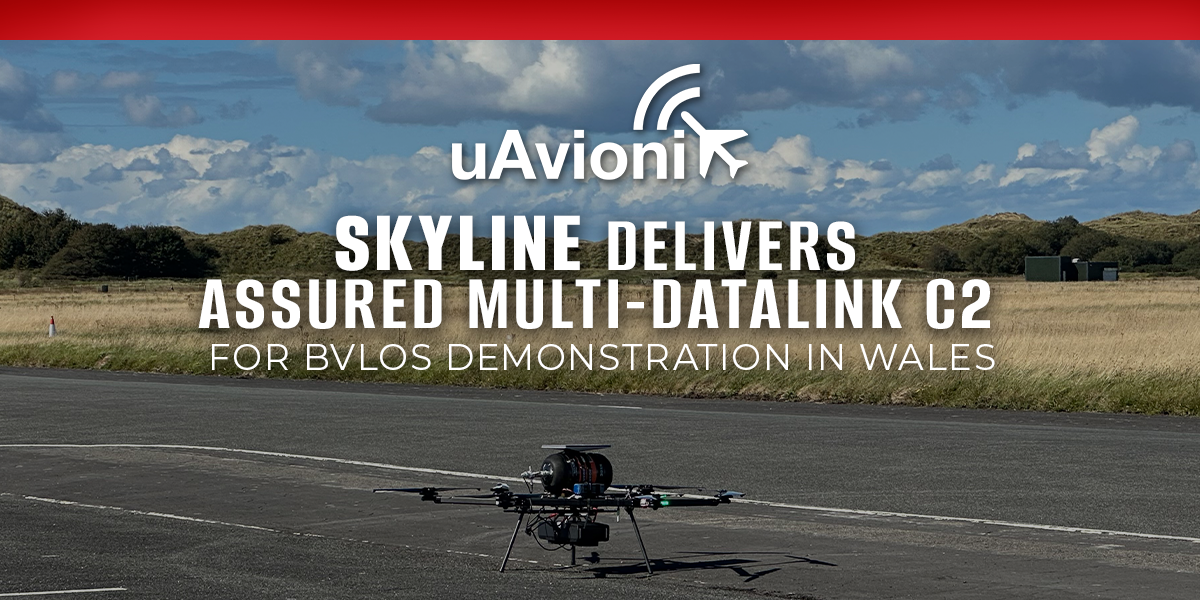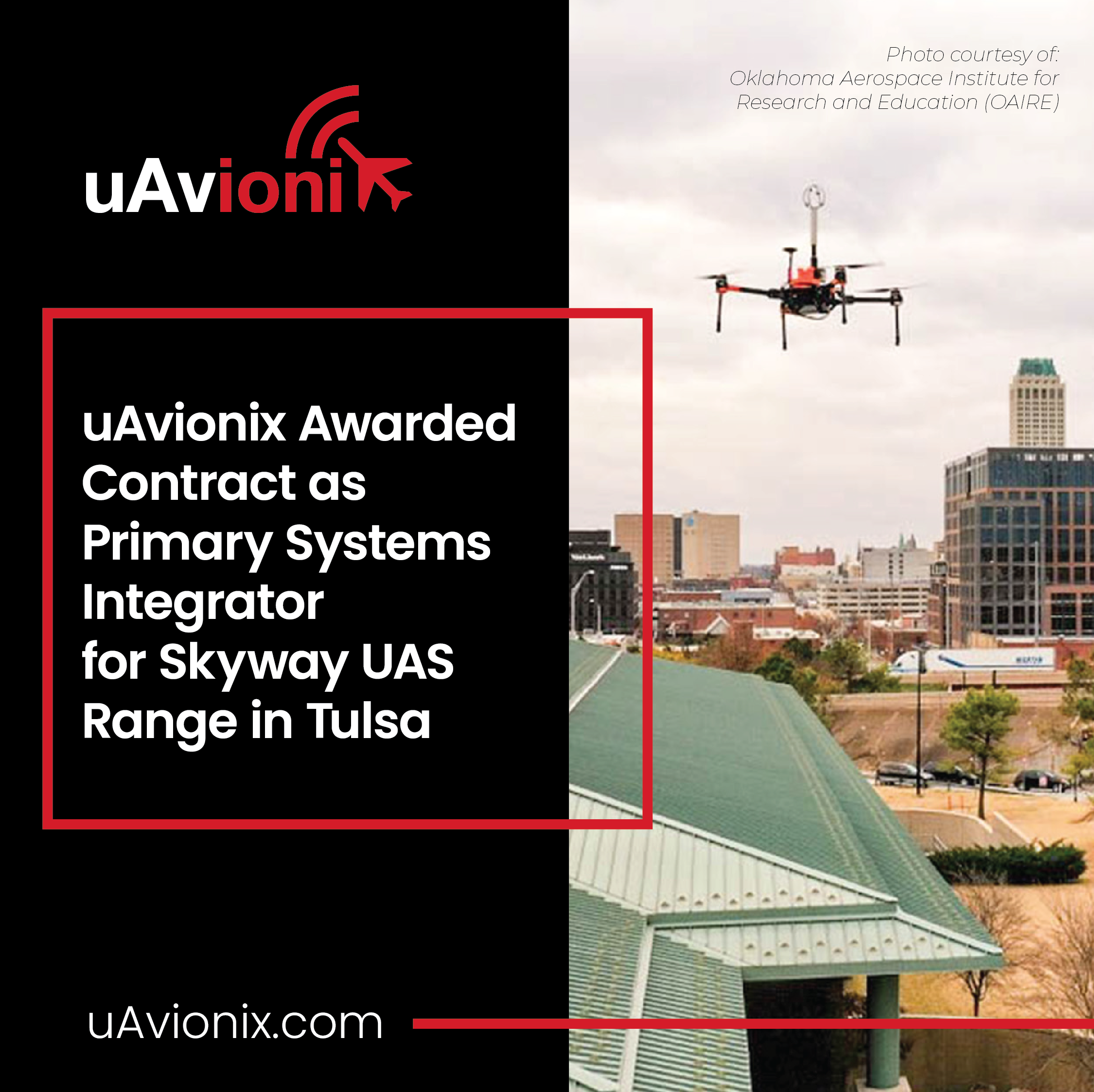uAvionix demonstrates muLTElink C2 Link Executive Manager and SkyLine C2 management platform at Choctaw Nation UAS Test Site.
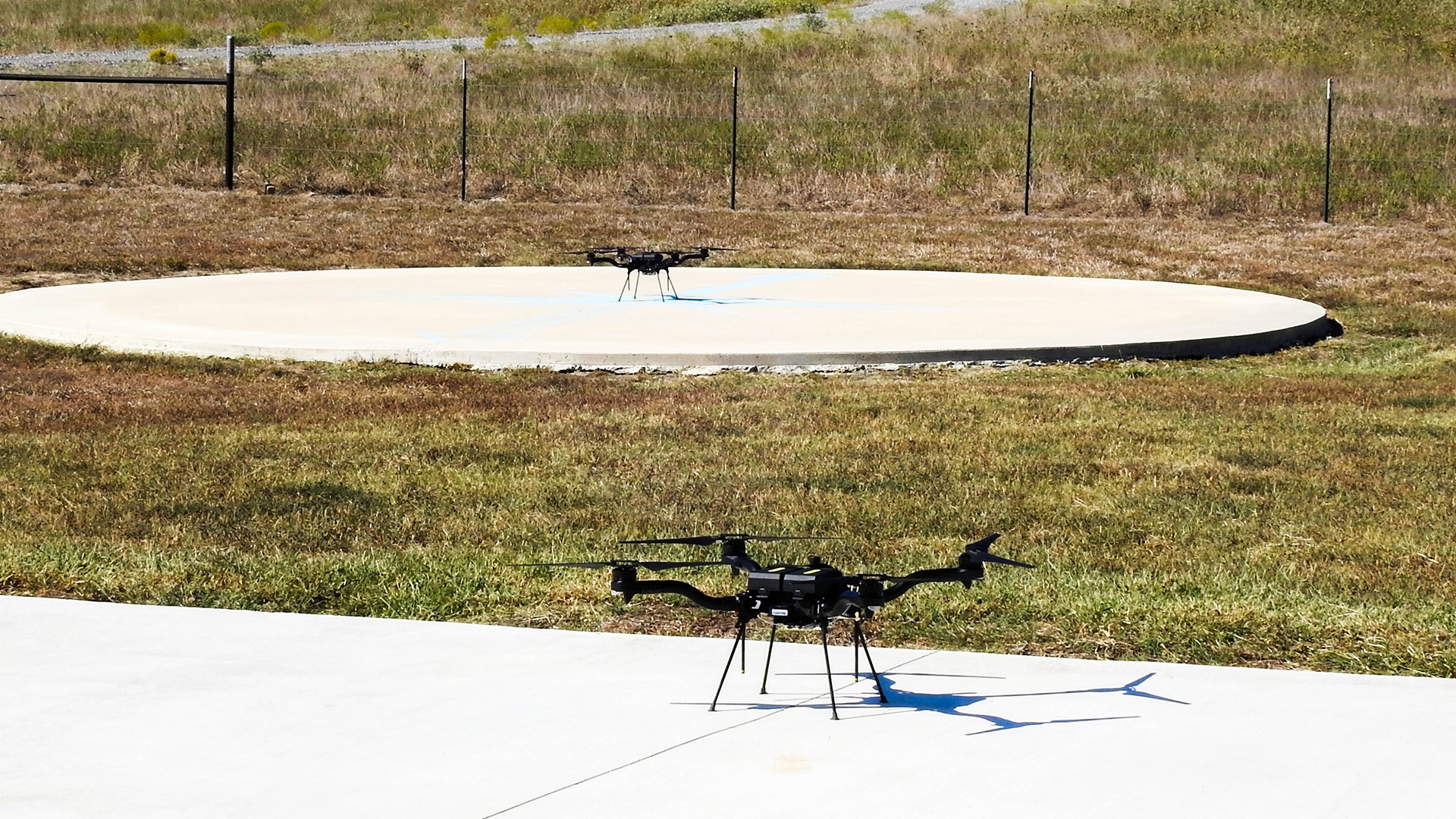
uAvionix recently completed a complex demonstration of its SkyLine Command and Control (C2) management service in which multiple Uncrewed Aircraft Systems (UAS) were being controlled from the cloud-based C2 platform, while each of the aircraft was connected to SkyLine by multiple simultaneous links to multiple terrestrial radios. The demonstration was conducted in coordination with the Chocktaw Nation of Oklahoma (CNO) UAS Test Center, an FAA Beyond lead participant.
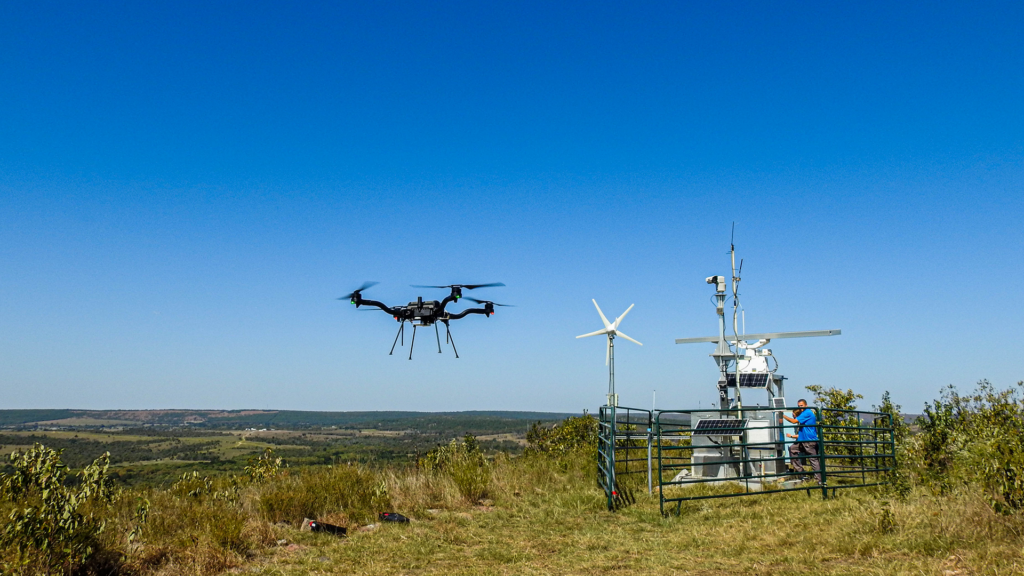
Avoiding a lost link scenario is critical to Beyond Visual Line of Sight (BVLOS) operations. Every radio and frequency has advantages and disadvantages depending on the geographic location and altitude of the operation. The uAvionix solution of leveraging both path diversity and link diversity focuses on the prevention of lost link situations by enabling seamless and lossless switching between radio types.
Path diversity exists when the radio frequency (RF) information has more than one physical path to its destination. This can be achieved by more than one radio onboard the aircraft, or more than one radio on the ground. The demonstration involved the uAvionix microLink ISM radio on the aircraft, providing 2X2-multiple input, multiple output (MIMO) diversity, effectively 2 radios in one, with two separate antennas, each connected to multiple skyStation ISM radios on the ground, each of which itself is a 2X2-MIMO. Path diversity provides the best chance for any given link to reach its destination through more than one physical path.

Link diversity exists when different radios or frequencies exist. For this demonstration, in addition to the ISM frequency microLink/skyStation radios, the uAvionix muLTElink provided LTE connectivity by its own internal 2X2 LTE MIMO. Therefore, on the aircraft, both path diversity and link diversity exist because the data can reach its destination through different radios (and frequencies) as well as different physical pathways from antenna to antenna.
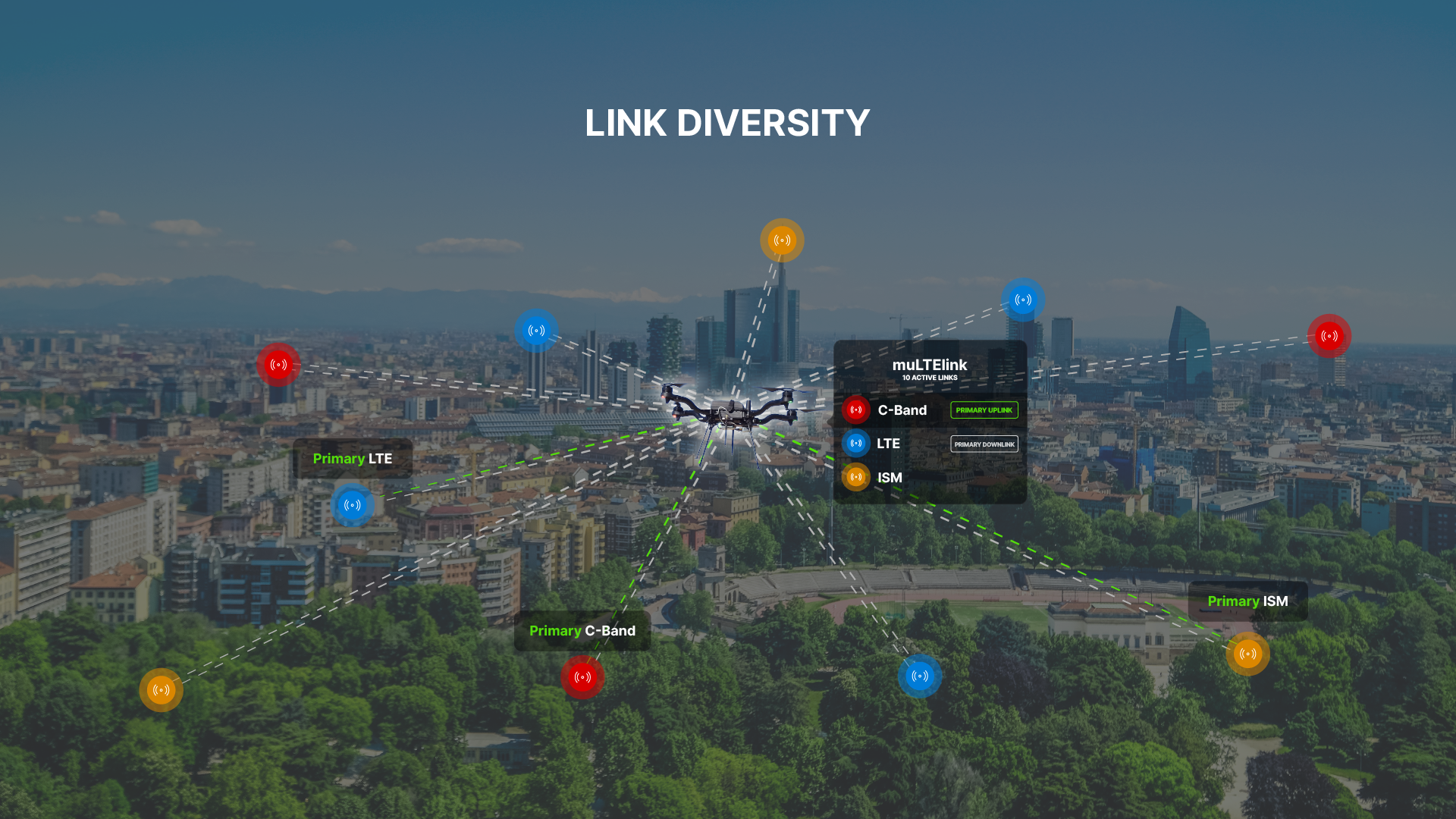
Combining both link diversity and path diversity creates a self-healing, deterministic, and low latency network incredibly resistant to interference or jamming due to the redundancy of pathways for the data to be transmitted and received. Managing this complexity is the SkyLine C2 management platform, which provides the operators with real-time statistics of each radio link, and allows either automatic or manual “roaming” from radio to radio, either in the air or on the ground.
“The Choctaw Nation of Oklahoma and the unique Emerging Aviation Technology Center (EATC) site with its vast diverse terrain are a perfect location to demonstrate the muLTElink and SkyLine capabilities,” said Marc Hartman, Manager of Aviation Operations with CNO, “With existing gaps in cellular coverage it provides a real-world environment to showcase the unique ability of muLTElink and SkyLine cloud service to provide seamless command and control of an aircraft in real-world environment”.
In addition to automated C2 management, uAvionix also used SkyLine to demonstrate an integrated detect & avoid (DAA) capability from terrestrial sensors, including the CNO Detect HARRIER™ terrestrial primary radar information and several uAvionix pingStation3 ADS-B receivers to provide a complete picture of cooperative and non-cooperative aircraft in the entire airspace.
“The capability of presenting integrated radar and ADS-B data into a managed C2 solution ultimately utilizing uAvionix C-band radios is a major contributor to our planned BVLOS operations here at the Choctaw Nation,” stated Hartman.
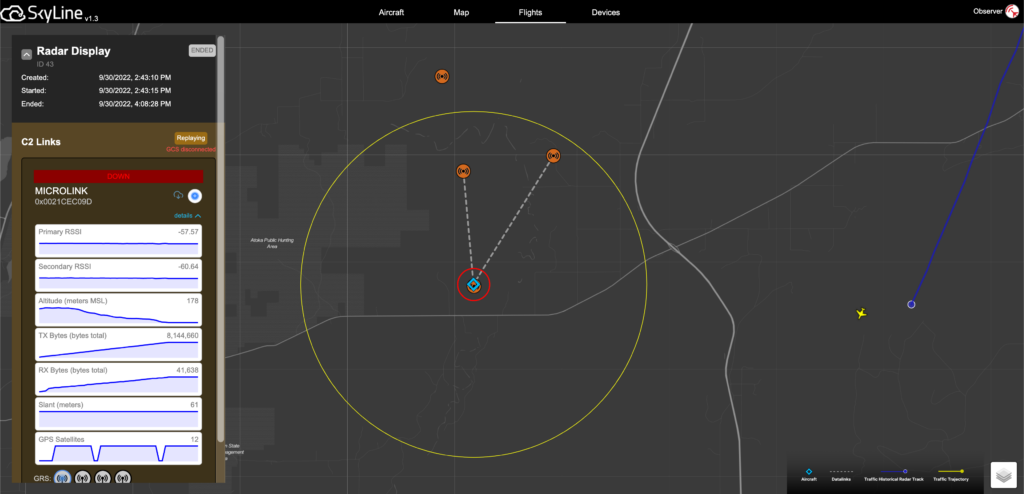
The SkyLine system is currently deployed as the C2 Service Provider in Vantis, the State-Wide North Dakota BVLOS network. SkyLine is also installed at the Oklahoma Emerging Aviation Technology Test Center, the New Mexico UAS Test Site, and the AIRmarket led Energy UTM trials in Canada. More commercial operators are expected to join the SkyLine Network in the very near future.
The muLTElink LTE C2 link manager is now available for beta testing. If you are interested in taking part, please contact uas@uavionix.com. To learn more about the SkyLine Network and our suite of Low-SWaP aviation-grade C2 radios, DAA solutions, and autopilots, visit uavionix.com/uas
About uAvionix
uAvionix was founded with the mission of bringing safety solutions to the unmanned aviation industry in order to aid in the integration of Unmanned Aircraft Systems (UAS) into National Airspace Systems (NAS). uAvionix offers low SWaP TSO certified and uncertified avionics for General Aviation (GA), Airport Surface Vehicles and the UAS markets. The team consists of an unparalleled engineering and management team with a unique combination of experience within avionics, surveillance, airport services, UAS aircraft development, radio frequency (RF), and semiconductor industries.
About the Choctaw Nation
The Choctaw Nation is the third-largest Indian Nation in the United States with more than 200,000 tribal members and 10,000-plus associates. This ancient people has an oral tradition dating back over 13,000 years. The first tribe over the Trail of Tears, its historic reservation boundaries are in the southeast corner of Oklahoma, covering 10,923 square miles. The Choctaw Nation’s vision,” Living out the Chahta Spirit of faith, family and culture”; is evident as it continues to focus on providing opportunities for growth and prosperity. For more information about the Choctaw Nation, its culture, heritage and traditions, visit choctawnation.com.
About The BEYOND Program
A Presidential Memorandum established the UAS IPP on October 25, 2017. The U.S. Department of Transportation (DOT) instituted it as a three-year program to enable state, local and tribal governments, in collaboration with industry to advance more complex UAS operations in the National Airspace System (NAS). Under the IPP, the FAA executed Memoranda of Agreement (MOAs) with 10 state, local and tribal governments to conduct advanced UAS operations to advance safe and secure integration.
The nine IPP lead participants accomplished many achievements under the IPP, and the FAA shared the relevant data and lessons learned with the appropriate policymakers and regulatory teams within the FAA and DOT to inform regulations, policy and guidance. The FAA concluded the IPP on October 25, 2020 as mandated by statute and decided to continue the partnerships and progress it made under the IPP to continue to address remaining challenges. The BEYOND program started on October 26, 2020 to continue the partnerships with eight of the nine IPP participants. The program will focus on operating under established rules rather than waivers, collecting data to develop performance-based standards, collecting and addressing community feedback and understanding the societal and community benefits, and to streamline the approval processes for UAS integration. More information on The Beyond Program: https://cnoaa.com/
